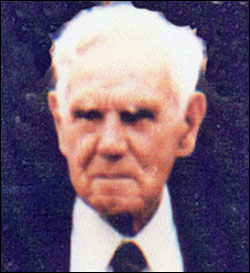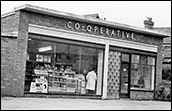| Article researched by John Langley 2006 |
||||||||||||
|
||||||||||||
|
||||||||||||
|
During the 1939-1945 war, the left-hand side shop in
The late 1940s to the end of the 1960s saw a period of change and expansion. There were closures in By 1950, the hardware shop which had been owned by A.J. Wittering for more than 30 years had been purchased to become the Co-op Hardware Dept. In 1957 the large garage on the right of the entrance to the yard at the High Street Central Stores was converted to an open-fronted wet fish and greengrocery shop, the sliding door was retained to secure the shop when closed. In 1950, two electric battery powered mobile grocery shops were purchased. They were large vehicles, almost the size of a single deck bus, their battery pack weighed about 8 tons and when fully loaded they probably weighed as much as 15 tons. They traded around nearby villages and Barton Seagrave. The tobacconist shop owned by Alf Coles adjacent to the main store became the Electrical Department when Alf retired c1953. This allowed a full range of electrical goods to be sold. Previously televisions had been sold from the furnishing department.
Between 1952 and 1954 a new grocery and butchery store was built in the High Street and at about the same time the grocery shop in In 1955 and 1956 the abattoir in In 1956, alterations were made to the electrical shop when it was combined with the two remaining cottages on either side, the one on the right was already a furniture showroom and it all became the furniture shop. The electrical shop moved to the previous furniture shop. The stand-alone building next to Osborne House, the doctors' home and surgery, became a fish and grocery shop in 1957.
|
||||||||||||

